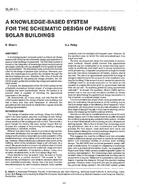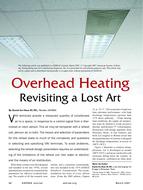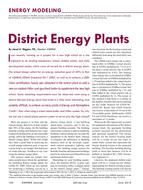It is generally accepted that infiltration reduction devices on cold storage doorways such as strip curtains, air curtains, and vestibules will reduce doorway infiltration, and thereby reduce refrigeration load. To date however, little experimental work has been conducted to quantify the effectiveness of such devices under actual operating conditions. Previous investigations have concentrated on the effectiveness of the devices without doorway traffic. Even with protective devices, infiltration through doorways is still considered one of the single largest contributors to refrigeration load. The infiltration contribution is often considered to account for up to 50% of the total load. Therefore, engineers must accurately estimate the contribution of doorway infiltration in sizing cold storage refrigeration equipment.
The current method for determining doorway infiltration, recommended in the ASHRAE Refrigeration Handbook 1990, is based on applying an effectiveness of a protective device to a calculated heat load for an unprotected door. This research project was undertaken to field test the effectiveness of currently utilized protection devices installed on cold storage doorways under a variety of conditions. This research effort included on-site testing of doorway protective devices both under static (no forklift traffic) and dynamic (with forklift traffic) conditions, and at various temperature and humidity differences. The infiltration protection afforded by the devices was determined by conducting tracer gas decay tests on the cold rooms. The effectiveness of eight different types of protection devices have been characterized. In addition, measurements of air exchange for unprotected doors are presented for comparison to current models.
Product Details
- Published:
- 1992
- Number of Pages:
- 98
- File Size:
- 1 file , 1.8 MB
- Product Code(s):
- D-RP-645


